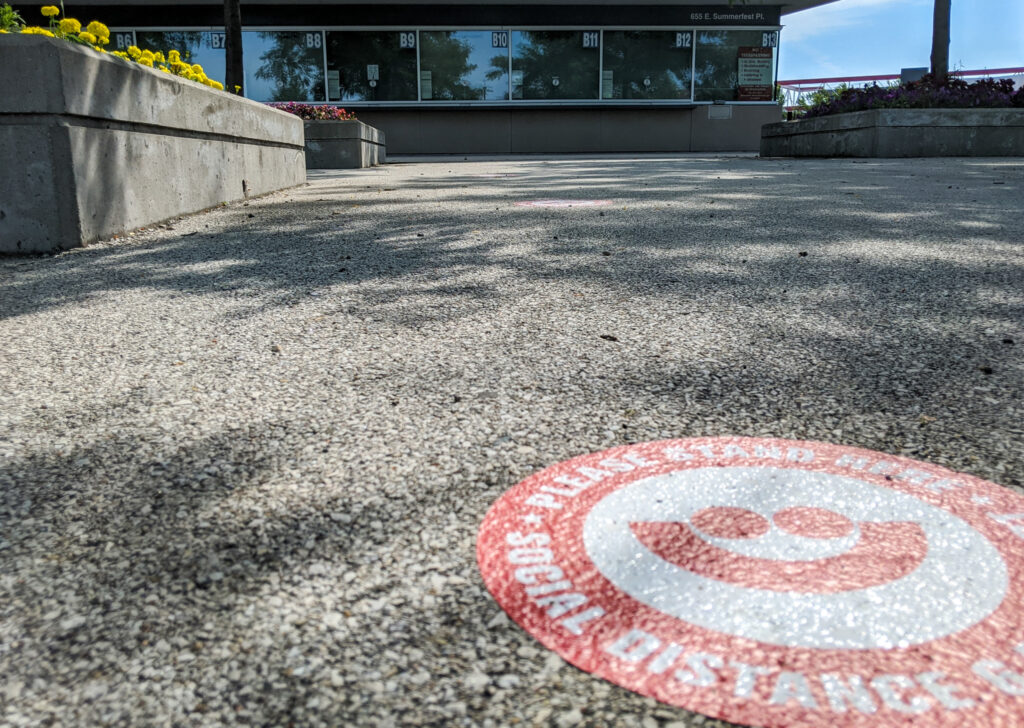With the passing of Summerfest diva Bo Black, there was a little more incentive to run through the Henry Meier Festival grounds where the annual event (at least until 2020) is held for over 50 years. For certain, Black was one of those Milwaukeeans that left an indelible impact on the city and her tenure at Summerfest is significant for the level of expansion she promoted. This has been beneficial to the area surrounding the grounds, which have enjoyed similar expansion and development. But the influx of visitors, and all the hassles that brings with it, has led many city residents to refer to this 11-day festival as “Bummerfest.”

Territorial posturing aside, I made an extra effort to run through the festival grounds this past Sunday. It’s familiar territory. In addition to running through the grounds a few times a month, I also work there every summer as a bar manager. Vacant, the grounds are fascinating to me (and the subject of a post that I need to polish up). After working a 12-hour shift of chacking photo IDs, making change for cashiers, and fending off heat exhaustion, it’s refreshing to wander the grounds after hours as the clean-up shift starts their rounds.

Shortly after the announcement that Summerfest was cancelled this year, I also made a point to run the length of the grounds that face Lakeshore State Park and Lake Michigan beyond. It was remarkable that, despite the cancellation, there was someone tending to the enormous planters that flank the central entry gate. Even while the rest of the grounds allows nature’s reclamation, this stalwart is still watering the flowers.

This is the essence of service: the hidden and silent acts and labors that have allowed us to feel “in place” during this pandemic. Before the coronavirus, few service workers were acknowledged let alone appreciated. Suddenly, service providers were charged with providing comfort and consumption to Americans who missed their tapped beers and burgeoning plates of food. I hope that this appreciation continues, five months into the pandemic.

So as I took a couple circuits through the festival grounds, I focused on the evidence that someone was still taking care of the landscaping. Billowing hydrangeas and deep crimson lilies are found throughout. But I spent more time finding emerging wilderness, the green creeping through the paving. Thistles that line the lagoon shores. As I exited the grounds along the southern road, the images reveal the oppressive design of the grounds themselves and the way this “public” space is actually inaccessible. Service roads wind up the manufactured terrace behind barbed wire fences. Bar facilities, backsides sheathed in brutalist concrete, stand watch over the empty arena.

So while this piece nods towards Ms. Black and her efforts, more appreciation goes towards those who are working after the crowds have dissipated: the maintenance crews keeping the facilities functional; the grade school counselors slinging beers to sunburnt suburbanites; the landscapers who give face to this non-place, these gardens of Summerfest.












All photos by author, taken Sunday, July 26, 2020. I’m not a gardener so if I’ve mis-identified any flowers or plants here, please let me know.
This work is licensed under a Creative Commons Attribution-ShareAlike 4.0 International License.

My name’s Kris Purzycki, a lecturer at the University of Wisconsin-Milwaukee. During the summer, I also work the JCI South stage at Summerfest.


